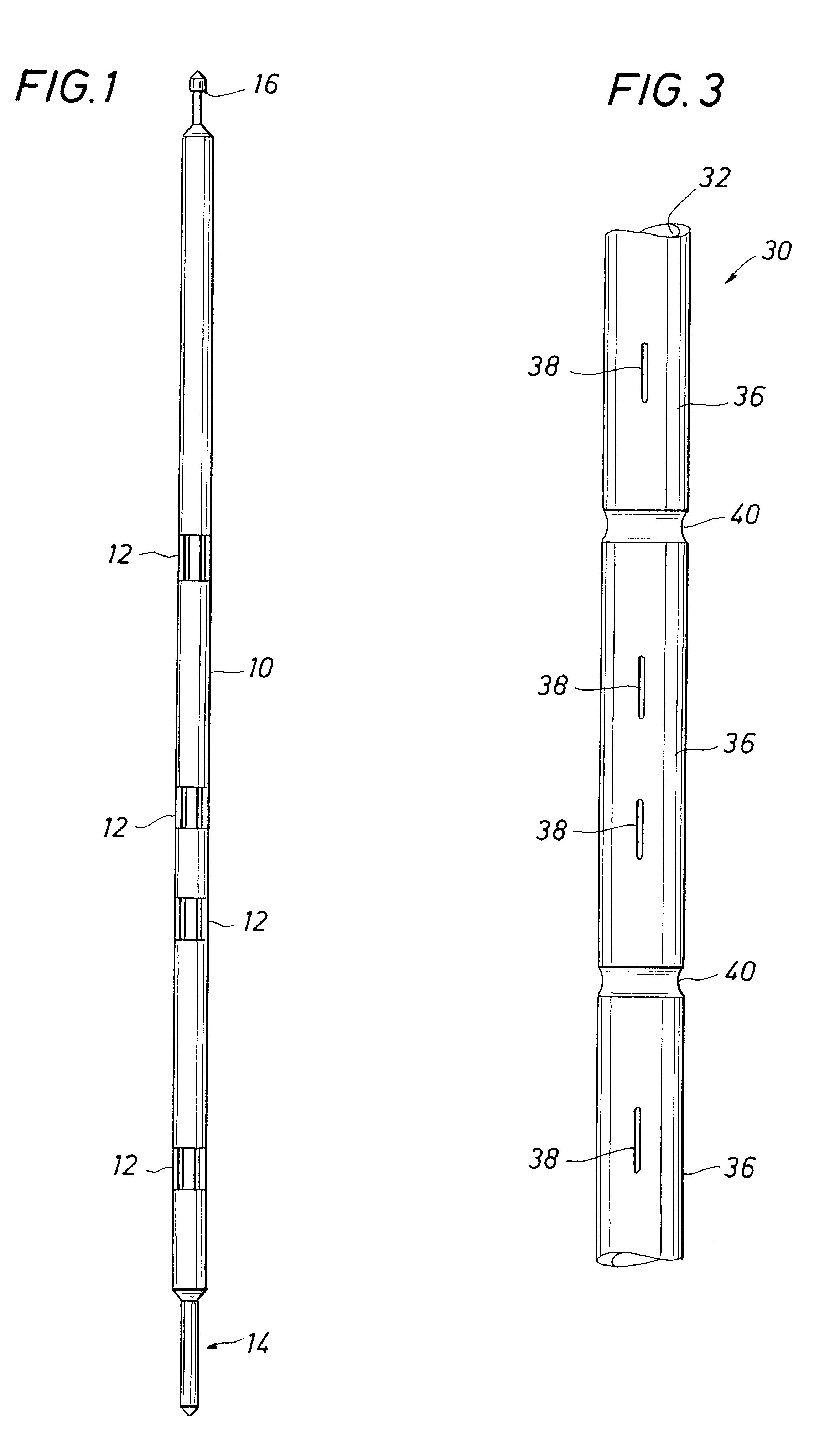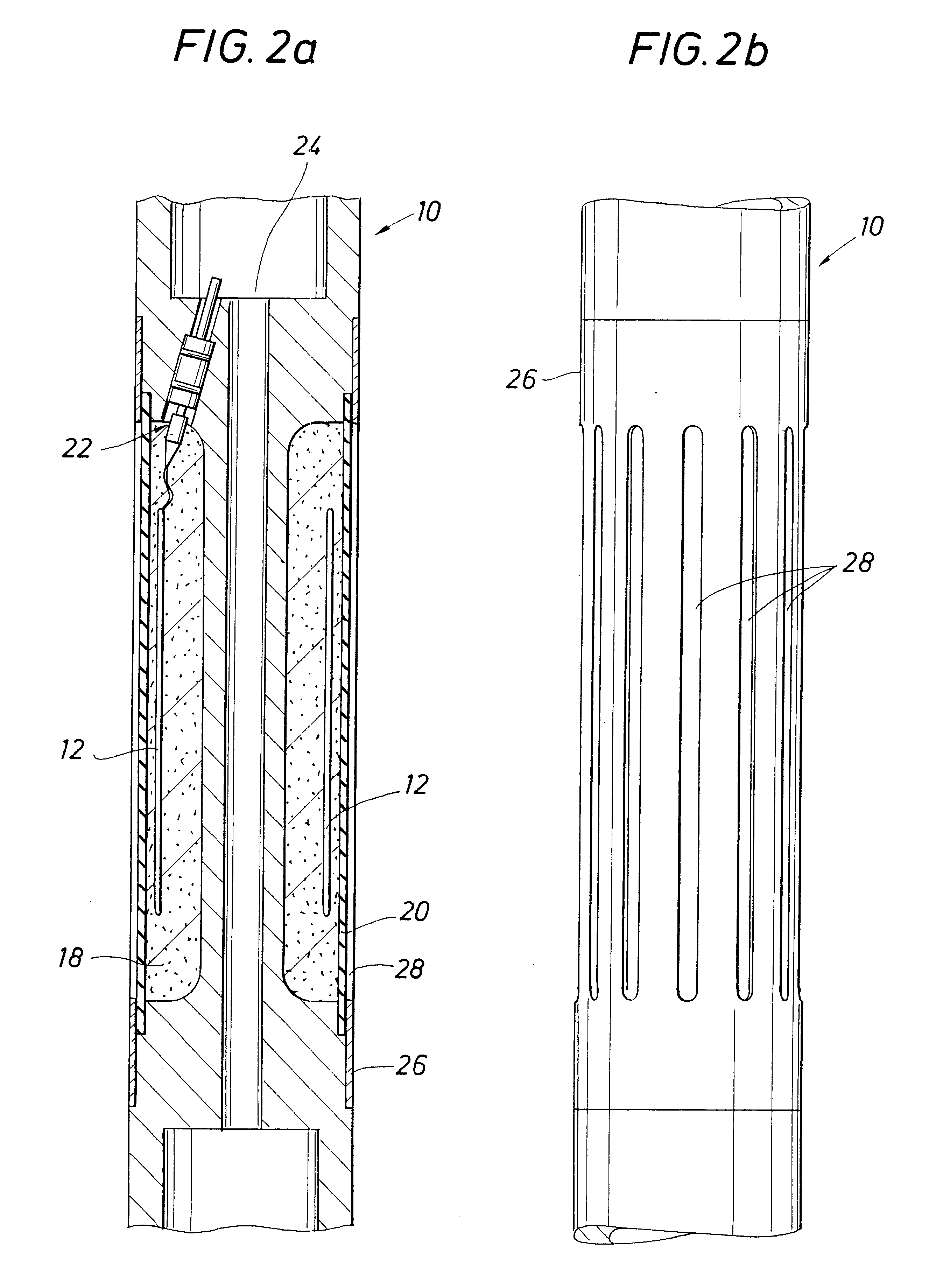Method and apparatus for downhole signal communication and measurement through a metal tubular
a technology of metal tubing and signal communication, which is applied in the field of subsurface earth formation investigation, systems and methods for transmitting and/or receiving a signal through a metallic tubular, can solve the problems of not being logged, increasing the cost and difficulty of wireline tool use, and the cost of wireline logging is too high, so as to achieve the effect of sealing the opening
- Summary
- Abstract
- Description
- Claims
- Application Information
AI Technical Summary
Benefits of technology
Problems solved by technology
Method used
Image
Examples
Embodiment Construction
In the interest of clarity, not all features of actual implementation are described in this specification. It will be appreciated that although the development of any such actual implementation might be complex and time-consuming, it would nevertheless be a routine undertaking for those of ordinary skill in the art having the benefit of this disclosure.
The apparatus of the invention consists of two main assets, a run-in tool (RIT) and a drill collar. Henceforth, the drill collar will be referred to as the sub.
4.1 RIT
FIG. 1 shows an embodiment of the RIT 10 of the invention. The RIT 10 is an elongated, small-diameter, metal mandrel that may contain one or more antennas 12, sources, sensors [sensor / detector are interchangeable terms as used herein], magnets, a gamma-ray detector / generator assembly, neutron-generating / detecting assembly, various electronics, batteries, a downhole processor, a clock, a read-out port, and recording memory (not shown).
The RIT 10 does not have the mechanic...
PUM
 Login to View More
Login to View More Abstract
Description
Claims
Application Information
 Login to View More
Login to View More - R&D
- Intellectual Property
- Life Sciences
- Materials
- Tech Scout
- Unparalleled Data Quality
- Higher Quality Content
- 60% Fewer Hallucinations
Browse by: Latest US Patents, China's latest patents, Technical Efficacy Thesaurus, Application Domain, Technology Topic, Popular Technical Reports.
© 2025 PatSnap. All rights reserved.Legal|Privacy policy|Modern Slavery Act Transparency Statement|Sitemap|About US| Contact US: help@patsnap.com



